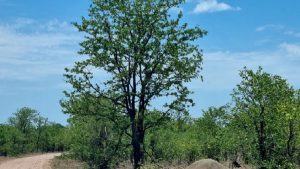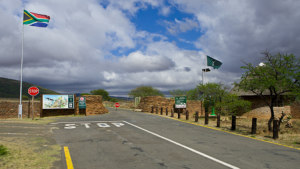Opinion penned by Minister of Forestry, Fisheries and the Environment Barbara Creecy
Having kicked off South African National Parks Week 2023 last week, it is with great enthusiasm that I encourage all South Africans to take advantage of the free access granted to our country’s national parks until 24 September 2023.
This annual campaign, which started on Saturday 16 September 2023, provides a unique opportunity for our communities, especially those who may not have had the chance to experience these magnificent areas of conservation, cultural heritage, and biological diversity, to connect with the natural world right on their doorstep.
The free access offered through the South African National Parks (SANParks) system is aimed at inspiring people to take pride in the country’s cultural heritage while spending time in and with nature.
Elderly people who have lived all their lives next to a National Park without ever seeing what is on the other side of the fence are getting an opportunity to visit their neighbouring National Parks.
South African National Parks Week kicked off on 16 September and continues till 24 September, with some of our parks even extending the free access into the weekend https://t.co/pxkg2id36j #LiveYourWild #SANParks #WildBackyard pic.twitter.com/g2PXCAvnHF
— SANParks (@SANParks) September 20, 2023
SANParks also hosts pupils, pensioners, persons with disabilities and many others. In order to qualify for free entry, all South Africans are encouraged to carry their identity documents; children below the age of 16 will not be required to provide identification.
I am pleased to note that National Parks Week has gripped the imagination of some of our provincial conservation authorities, with the Limpopo Tourism Agency and North West Tourism and Parks Board joining to host Mahala Week where select game reserves in the provinces are offering free access as well.
Conservation and the protection of our country’s rich biodiversity is a commitment we cannot shy away from, especially as we work towards expanding our conservation estate to meet international commitments and work to protect our natural world in a sustainable way for current and future generations, thus, the importance of popularising our national and provincial parks.
South African National Parks Week is HERE ️
Until 24 September you can get free day access to most of our 21 parks, with some parks extending their offer into the weekend. Get to know your national parks, get to know your backyard! https://t.co/pxkg2id36j #WildBackyard pic.twitter.com/g7viPyQuOy
— SANParks (@SANParks) September 20, 2023
Under the established theme Know Your National Parks – this year’s SA National Parks Week campaign kickstarted in the Kruger National Park. This world-renowned Park is not only South Africa’s first national park but is also the largest, spanning 19 458 square kilometres.
The Kruger is the sixth-largest national park in Africa and not only boasts the iconic Big Five alongside a wide variety of wildlife and plants but is also home to unique landscapes and biomes.
SANParks is among our institutions that is reliant on revenue generated from its tourism offerings and other activities.
Tourism is an important part of our country’s economy and contributes significantly to GDP and job creation. As a preferred tourist destination, we should not lose sight of the importance of continuing to find innovative ways to continue to grow this sector.
Key to this remains the partnerships between government, communities and the private sector. It is thus important to acknowledge the much-needed assistance from the National Department of Tourism, which has supported several infrastructure projects in our national parks.
This includes the installation of a solar PV array with 2 640 PV modules and 33 inverters that connect directly to the Kruger National Park’s electricity grid at a nearby Eskom substation in the Skukuza main camp.
I am told that this system has an installed capacity of 844.8kWp (kilowatt peak) and provides approximately one-quarter of the daytime electricity demand for the entire Skukuza rest camp and administrative operations. Since the commissioning of the system in May 2018, Skukuza has reduced its electricity bill with an average of R136 000 per month, which translates to a saving of more than R8 million over the past five years.
This is a positive step towards greater cooperation between government departments and institutions and to our efforts to rebuild and rethink the ways in which we finance and manage our protected areas. Such partnerships can and will ensure the future sustainability of nature-based tourism and its longer-term employment potential.
Because the majority of our national parks are situated in rural areas they are able to make use of goods and services offered by adjacent and nearby communities. It is because of this that SANParks spent more than R550 million procuring services from SMMEs in the past year.
R273 million has been spent on 863 SMMEs through the Expanded Public Works Programme (EPWP), creating more than 5 364 full-time equivalent work opportunities in communities where there is little other formal employment.
Every day, an average of 7 500 individuals employed by the EPWP enter our national parks and do crucial work such as land rehabilitation, cleaning of beaches, support of rangers and infrastructure maintenance.
Through collective actions, collaborations, and responsible stewardship, we can ensure that our national parks remain not only a source of pride but also a beacon of hope for future generations. Let us cherish these natural wonders, take pride in our cultural heritage, and unite in the effort to conserve and protect our national parks, for they are an enduring legacy that we must pass on to our children and grandchildren.






